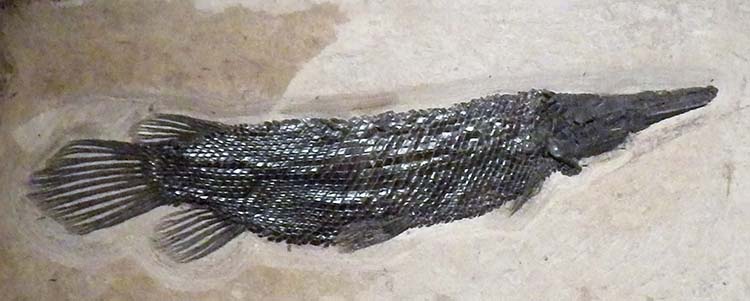Why Alligator Gar are Important
Alligator gar are an important part of Texas fisheries. Their ancestors have been found in Permian deposits as fossils from 215 million years ago, making them not only one of the most ancient fishes, but also truly native Texans. They are the largest and longest-lived freshwater species in our state, with recent catches of fish more than 8 feet long and 60 years old. Their size and long life span, coupled with their primitive characteristics and ancient history, make the alligator gar not only a cornerstone of Texas’ natural biodiversity, but also a prized catch among recreational anglers.

A fossil ancestor of alligator gar at the Field Museum of Natural History. Photo courtesy of Olaf Nelson
Many populations support popular fisheries, drawing anglers from all over the world to fish in Texas. The Trinity River, arguably the world’s best fishing destination for the largest alligator gar, supports guide services that specialize in the species, with clientele from the United States, Canada, Europe, and Asia.
The alligator gar also plays an important role in keeping Texas’ aquatic ecosystems healthy. Like sharks in marine systems, this fish helps maintain healthy numbers of many other species. Alligator gar primarily feed on fishes such as buffalo, carp, and shad. Although they will eat game fishes such as bass and crappie, consumption of these species is relatively uncommon. Just think: some of the most well-known bass fisheries in Texas, including Sam Rayburn, Toledo Bend, Falcon, Amistad, and Choke Canyon reservoirs, also contain healthy populations of alligator gar.